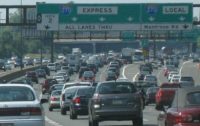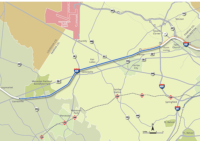Maryland leaders have agreed on a plan to add tolled express lanes to two suburban Washington, D.C., interstates using private financing, breaking a procedural logjam that stymied one of the nation’s largest P3 initiatives.
The plan, set to be formally approved by Maryland’s Board of Public Works on Jan. 8, calls for adding up to four express lanes on a five-mile section of the I-495/Capital Beltway, complementing a recently announced P3 deal with Virginia to widen the highway’s Potomac River crossing. In addition, Maryland will add express lanes to a 9-mile section of I-270 between the Beltway and I-370 in Gaithersburg. Contracts for both projects, valued at as much as $11 billion, will have a union labor requirement.
Contractor selection for both the I-270 and Potomac River expansions is set to begin in February, with construction beginning as early as mid-2020. Selection of the Beltway express lanes contractor will then get underway.
The agreement follows more than two years of controversy after Gov. Larry Hogan (R) initially proposed substantially longer versions of both the Beltway and I-270 projects. Opponents criticized the use of private financing for such a major undertaking, and pressed for greater state oversight. Hogan, a member of the three-member Public Works board, had also encountered difficulty securing a second vote to advance the plan until making concessions to revamp the project’s scope and schedule, limit property acquisition and incorporate conditions such as directing a percentage of toll revenue to transit funding.
With some Maryland lawmakers threatening to introduce measures to slow the process in the upcoming legislative session, however, Michael Sakata, executive director of the Maryland Transportation Builder’s Association, is hopeful such efforts “do not throw a wrench into the process, cause any further delays, or scare off any potential concessionaires.” Sakata also notes that compromise agreement reflects a balanced approach that came out of open discussions” between Maryland transportation officials and community stakeholders.”




Post a comment to this article
Report Abusive Comment